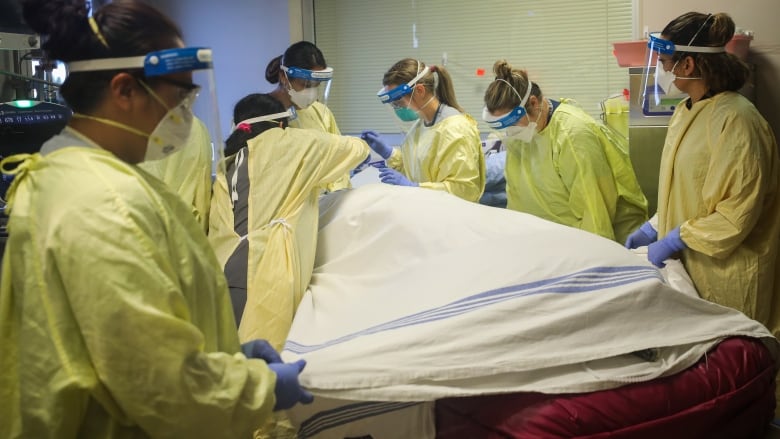By Heather Yourex-West Global News
Posted September 2, 2021

WATCH: As the world transitions away from fossil fuels, jobs in the oil and gas industry will continue to disappear. The concept of a 'just transition' suggests a healthy economy and clean environment can and should co-exist. But as Heather Yourex-West explains, that transition is easier said than done.
For Jenine Campbell-Cove, a career in the oil and gas industry just made sense.

A member of the Saulteau First Nation, in northeast British Columbia, Campbell-Cove was 19 when she began working on a pipeline.
“I learned how to do everything … run equipment, welding, labouring — it’s so multi-faceted and it was really great,” Campbell-Cove says.
Her career in oil and gas lasted nearly two decades, but several years ago she began pursuing a career change. After years of ups and downs, her future prospects in the industry seemed uncertain and Campbell-Cove didn’t want to be left behind.
“I had been trying to get out of it for so long, but what do you do when you don’t have any transferable skills or education?” she said.
“I know a lot of people were like, ‘What do we do? What are we going to do? What can we do?’ And the answer was always the same: we can’t do anything.”
An injury finally forced the mother out of the industry last year, but she says making the transition wasn’t easy. Campbell-Cove ultimately had to relocate in order to find work and she believes more needs to be done to help other workers who are trying to make a career change.
Jim Stanford, an economist and the director of the Centre for Future Work, says Alberta workers have been “left to their own devices” in bearing the pain of energy market disruptions and he believes governments need to begin planning to ensure those still working in the industry are prepared for what’s to come.
“There’s no doubt anymore that we are transitioning away from fossil fuels and that transition is happening faster than we expected,” Stanford said.
“Just burying our heads in the sand isn’t helping workers.”
According to Energy Safety Canada, the oil and gas industry has shed over 40,000 jobs since August 2014. The labour pool is shrinking, too, as more workers pursue opportunities in other fields.
Stanford believes the industry will continue to shed jobs over the next several decades.
“I think we have a very clear idea of the timeline. The world has recognized we need to get to net zero by 2050, so that’s a runway of less than 30 years and the more we delay, the harder it becomes,” he says.
“A vital lesson of transition planning is if you start soon and do it gradually, the impact on workers and communities is much, much reduced.
“Our research shows that you can phase out direct fossil fuel employment in Canada over a 20-year period and almost all of the adjustment can be taken up through early retirements and other voluntary transitions.”
Stephen Buhler says he would be happy to transition out of the industry now — if he could find the work.
The journeyman machinist has worked in oil and gas since graduating from high school 13 years ago. He worries about the future viability of the industry and about climate change, too.
It’s why he volunteers with Iron & Earth, a non-profit advocacy group of oil and gas workers calling on the government to help workers in the sector transition to jobs in other fields.
“For me, personally, I would love to see more work in renewable energy projects, maybe geo-thermal projects or helping support wind and the solar industry, as well.”
READ MORE: OPEC cuts oil demand forecasts, BP sees ‘peak oil’ in 2020s
Of course, not everyone currently employed in the industry is looking to transition out.
Iggy Domalgaski is the CEO of Tundra Process Solutions, supplying equipment to the oil and gas industry and other sectors.
Domalgaski believes his company will continue to work with the industry for the rest of his career and many more years to come, but he also concedes things are changing, too.
“We’ll always continue to focus on oil and gas but a lot of these big capital projects like building large oil sands facilities those aren’t really happening anymore, so naturally over time our business has diversified and will continue to diversify.”
According to forecasts from International Energy Agency the global demand for oil will rise until at least 2026, though multiple forecasters project that demand will peak within the next 20 years.

Could decarbonization be Canada’s path to reach climate goals?
© 2021 Global News, a division of Corus Entertainment Inc.















